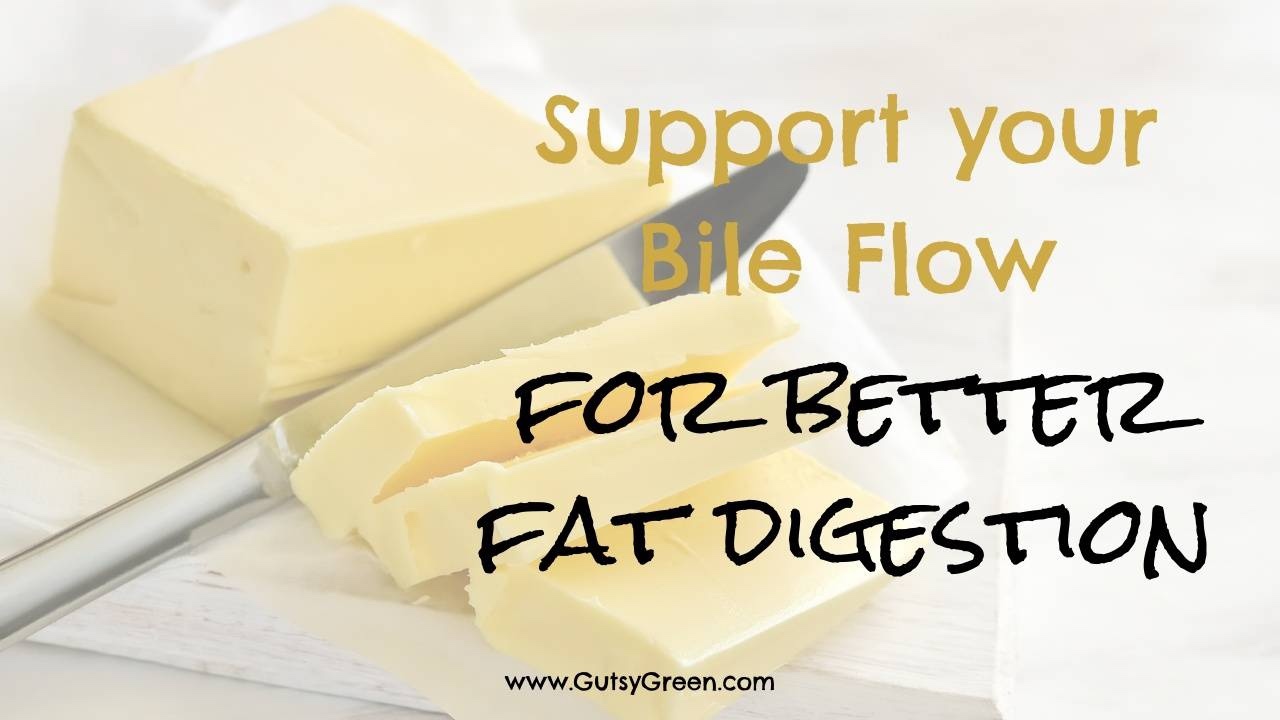Struggling with rich foods? How to support your bile flow for better fat digestion

Every day there seems to be another study coming out about the inflammatory dangers of consuming too many carbohydrates.
For most of us, this means embracing a diet higher in quality fat (and protein).
These types of diets have been clinically shown to have a therapeutic effect on many inflammatory conditions - helping with weight loss, managing metabolic syndromes, supporting neurological and heart health, and balancing hormones.
Yet, many who attempt to implement high-fat diets can experience unpleasant side effects.
Some of the most common of these are digestive distress, fatigue, sugar cravings, rashes, dry skin, and hair loss.
If high fat diets are as beneficial as the literature would imply, why would these negative symptoms occur?
Short answer: fat is not the culprit.
Instead, it is likely the body’s impaired ability to digest the increased levels of fat being consumed.
Fat digestion relies predominantly on secretions from the liver, pancreas, and gallbladder.
In a healthy body, these secretions are plentiful, but many conditions in modern life lead to a decline in the production of these important digestive juices.
The gallbladder is especially important in the context of fat digestion.
The organ sits under the liver on the right side of the body and is tasked with storing digestive bile.
Bile, a liquid produced by the liver, is composed of bile salts, bile acids, cholesterol, bilirubin and phospholipids like phosphatidylcholine.
It is responsible for breaking down dietary fat into fatty acid components more readily assimilated by the body.
If a person has been on a Standard American Diet for many years – chronically consuming low levels of poor-quality fats – this bile can often become viscous, leading to congestion and inflammation.
In some people this inflammation eventually progresses to gallbladder disease, which conventional medicine has opted to treat by simply cutting the organ out.
In these cases, the liver becomes overburdened with bile production as it struggles to compensate for the lost bile stores previously afforded by the gallbladder.
This can, of course, lead to a bile shortage, and can also lead to problems with the other 500 functions the liver performs in the human body, such as:
- detoxification
- hormone conjugation
- and energy storage and conversion.
This may help to explain why many people experience fatigue, sugar cravings, and hormonal issues when they eat more fat with not enough bile – the liver can’t keep up!
Even if you haven’t had your gallbladder out and have not experienced typical symptoms of gallbladder disease, you may still be dealing with biliary congestion that results in similar outcomes.
One of the biggest clues for this is if you increase the amount of quality fat and either feel no added benefit or feel worse.
After all, we are what we digest, not what we eat, and fat is of absolutely no use to us unless we can break it down and assimilate it.
In fact, undigested fat can wreak havoc!
We need to keep in mind that digestion is a north to south process, so any kind of dysfunction happening in an earlier step is going to affect what happens later on.
When we don’t secrete proper bile, large undigested fat particles can remain intact as they move through the small intestine, potentially compromising the structural integrity of the gut wall and leading to conditions such as Leaky Gut Syndrome.
Later, in the colon, these huge fat particles can become rancid and ferment, resulting in foul smelling gas, digestive upset, and a generally toxic colon.
The many functions of bile
Besides fat digestion, bile also plays a crucial role in many important bodily processes including:
-
Shuttling toxins into feces for elimination to prevent toxic overload
-
Stimulating water secretion in the large intestine, helping with motility and preventing constipation
-
Distributing antioxidants and immunoglobulins throughout the gut
-
Playing an antimicrobial role and keeping dysbiosis in check
-
Neutralizing stomach acid for pancreatic enzymes to work
How can I optimize my Bile Flow?
One of the most important steps we can take to optimize our bile flow and fat digestion is to improve the quality of the fat we eat.
We should avoid trans fats, industrial seed oils, margarines, too many omega-6 fats in nuts and seeds, and conventionally raised animal fats.
While animal fat is a wonderful source of the fat soluble vitamins A, D, E, and K, it is also where the body tends to store toxins for safe keeping.
Conversely, happy, healthy, pastured animals with minimal toxic loads can provide a wonderful source of fat via lard, tallow, or butter.
Great plant source options include coconut and MCT oil, avocados and avocado oil, and extra virgin olive oil.
Incorporating certain foods in the diet can also help with bile production and flow. Some of the highest therapeutic value exists in the following:
Beets: Beets are a great source of naturally occurring Betaine, which assists and protects the liver. Beets also contain high levels of folate and Manganese that support gallbladder function.
Radish: Radishes contain Sulphur which can help to dislodge any deposits or stones from the gallbladder. High levels of Vitamin C aid in preventing gallstone formation and support an enzyme called cholesterol 7-alpha-hydroxylase, which works to reduce plasma cholesterol and triglycerides.
Dandelion Root: Dandelion root increases bile production by stimulating gallbladder contraction and stored bile release. It also alleviates liver congestion and soothes bile duct inflammation, hepatitis, gallstones, and jaundice.
Taurine: This amino acid is ubiquitous in shellfish, dark animal meats, and offal. Taurine is an important raw material for the formation of bile salts and has been shown to increase the degradation and excretion of cholesterol through bile acids.
Glycine: This amino acid can be found readily in collagen and is attached along with Taurine to bile acids to create bile salts.
Phosphatidylcholine: These lipids serve as one of the crucial raw materials for bile formation. Egg yolks and wild-caught salmon are a great source of this nutrient.
If you’ve been working to include more fat in your diet and can’t understand why you may not be handling these changes well, don’t give up.
There are a number of interventions to help with the transition.
For biliary flow, this can be in the form of stimulating foods such as beets and bitters, but often may require more targeted supplementary support.
Of course, negative reactions to dietary changes can be caused by many different factors, so you should always work with a practitioner to decide what kind of support is right for you and your goals.


